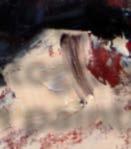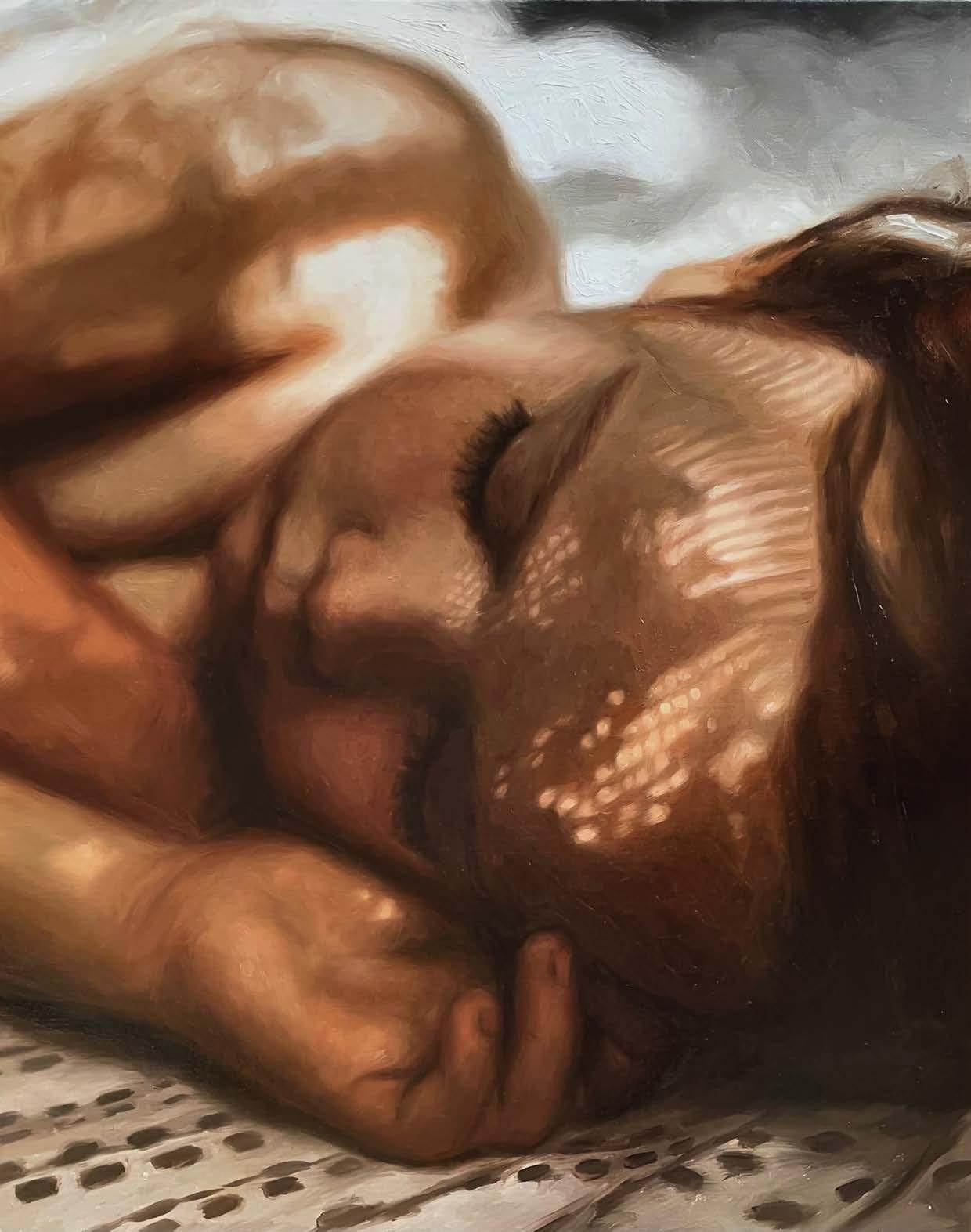






















































This Polish artist paints from a small studio set in an old, converted factory in Oslo, Norway, accompanied by various genres of rock music and a calming view. Ramsha Vistro discovers more ▸



It has been said that you don’t find art, it finds you. For Melbourne-based artist CLAIRE M C CALL , art certainly found her, just a little later than most. Niki Browes goes into detail ▸
 Rockpool Jumping II, Oil, 86cmx62cm
Rockpool Jumping II, Oil, 86cmx62cm



Afever dream set within a kaleidoscopic landscape of bold pattern, block colour, swollen proportions and snaking tendrils: this is just a slice of what’s on the menu at Yayoi Kusama – You, Me and the Balloons.
The 94-year-old Japanese artist has created an all-encompassing immersive world – made out of three decades worth of her in atable artworks; many over 10 metres tall – conceived speci cally for the cavernous interior of Factory International in Manchester. This is the rst time all of Kusama’s in atable pieces have been shown together and visitors can expect to be swallowed whole by the experience.
Phoebe Greenwood, Curatorial Associate at Factory International, believes audiences will be shocked at the sheer size of the pieces. “There is a purpose-built pavilion with a viewing platform, so people can be up amongst the oating balloons,” she says. “It’s pretty audacious.” Greenwood explains how Kusama responded to an invitation
to come up with a concept for Factory International “almost straight away with the wild and wonderful proposal.” The rst meeting they had was via Zoom. “We were shown the fully realised installation idea in miniature, handmade cardboard cut-outs and bits and bobs,” Greenwood recalls. “Artists have always created exhibition maquettes, but there was something so authentic and unpretentious about seeing her ideas represented in this way.”
Greenwood believes visitors can consider You, Me and the Balloons, which is all in one vast room, as “being a journey through Kusama’s mind,” describing peepholes into mirrored expanses, walks through “giant sprouting forms which is like life at plant level” or being dwarfed by the balloons. “And everywhere are polka dots, which can be seeds or stars... or you,” she says.
The polka dot is, of course, the most important of Kusama’s motifs: she is synonymous with it –multitudes of spheres scatter across her eightdecade career. She returns to it always – repeating ▸
I worked my way around the crown of sepals, working from back to front and varying the greens: bluer when the back is showing, more yellow on the top side. The veins are thick, so it is possible to work in between them, leaving them unpainted to start with and then painting a line of Rich Green Gold over them. Add a touch of Burnt Umber at the very tip where they are a bit dried up or show some damage.


Moving back to the petals, it is time to nish all the elements that are behind the almost black centre. The main colour for the underside of the petals is Mayan Yellow. Some of the petals also show a bit of damage or ageing. Burnt Umber is again used to show this. While the main yellow wash is still wet, drop in some Hansa Yellow Deep to the base of the petals.
The best way to approach the centre is to deal with the orets as if they were a drawing, albeit a drawing with paint, using a 3/0 brush and undiluted paint. First paint some wet-on-wet shadows, then a wash of Rich Green Gold as a background. The individual orets are then painted on dry paper with a tiny brush loaded with a mix of Perylene Violet and the original Harmonic Shadows mix.
The nishing touch is painting the hairs on the stem, using all the greens mixed together. Make sure you vary the angles and the colour to give an air of randomness. Now is also the time to tidy up edges and curling sepal tips for a crisp image.
You can nd more of Sandrine’s tutorials on her website sandrinemaugy.com, her YouTube channel Atelier Sandrine Maugy and her Patreon site Patreon.com/ SMaugy. Her book, Botanical watercolours through the seasons: an all-year-round guide to painting owers and plants, is out now ▫



ENJOY
For more demonstrations go to artistsandillustrators.co.uk


I add some pine trees by painting simple triangles with Green Gold and Perylene Green. In watercolour, it is very important to vary the water ratio and proportion otherwise, you can easily get stuck in mid-tones. To add texture to the ground, I use a small detail brush size 2 and a dabbing motion, picking up a colour from the wet areas of the pine trees. At the same time, I continue painting my owers and add some very dark cow’s parsley as well as grass blades using an Indigo and Perylene Green mixture. Having some very dark elements in the painting help to hold the composition together.



Finally, I add some bright red abstract blobs for red owers. It is at this stage that it does become clear how many I will need to make an accent for this painting. When it’s dry, I add a slightly lighter and bigger circle on top of the sun to indicate its glow. And for the nal step, I apply clusters of small dots of pure Indigo on the water parts where I want to create shadows. Using a Posca pen, I apply white dots where I want to bring highlights. I add dashed white lines to the pine trees and some clusters of dots on the ower meadow.
For more techniques go to artistsandillustrators.co.uk
